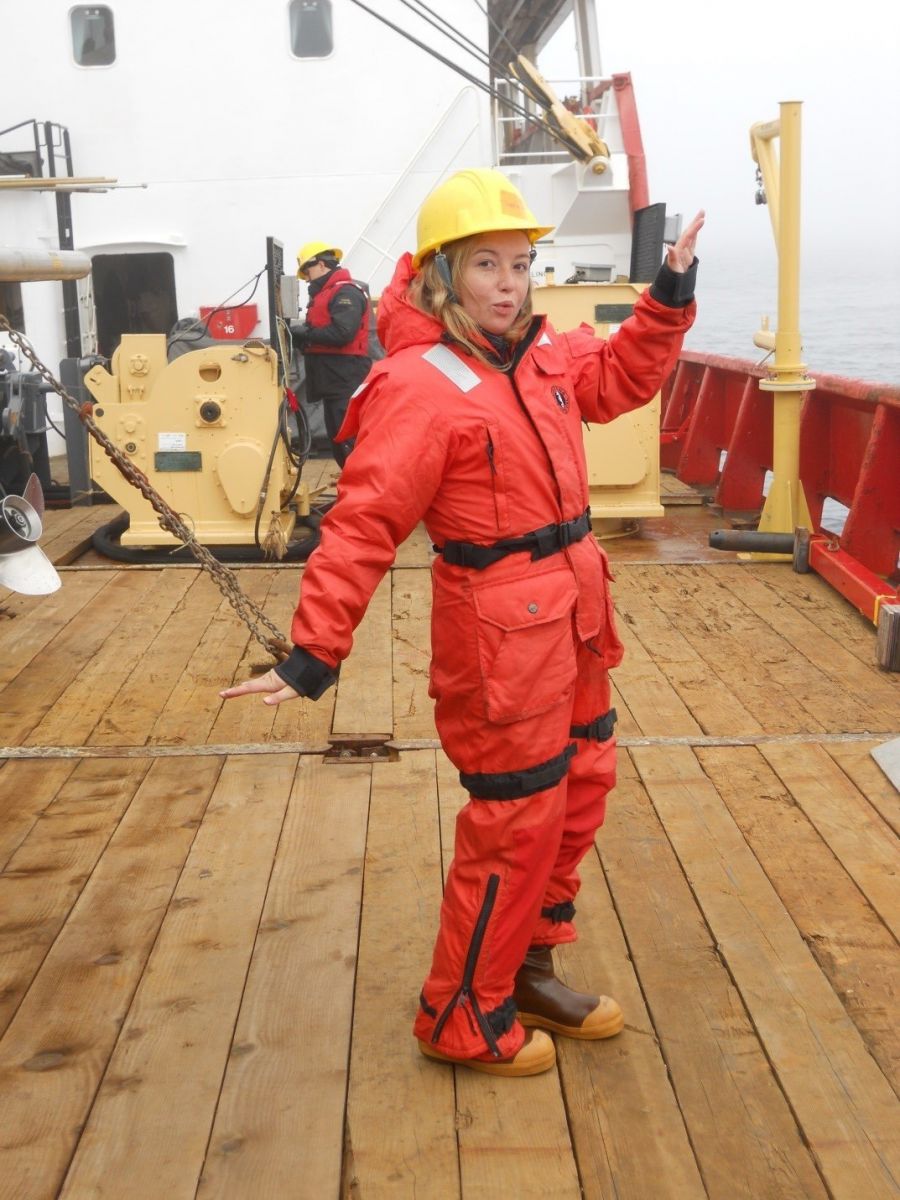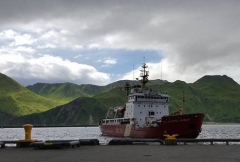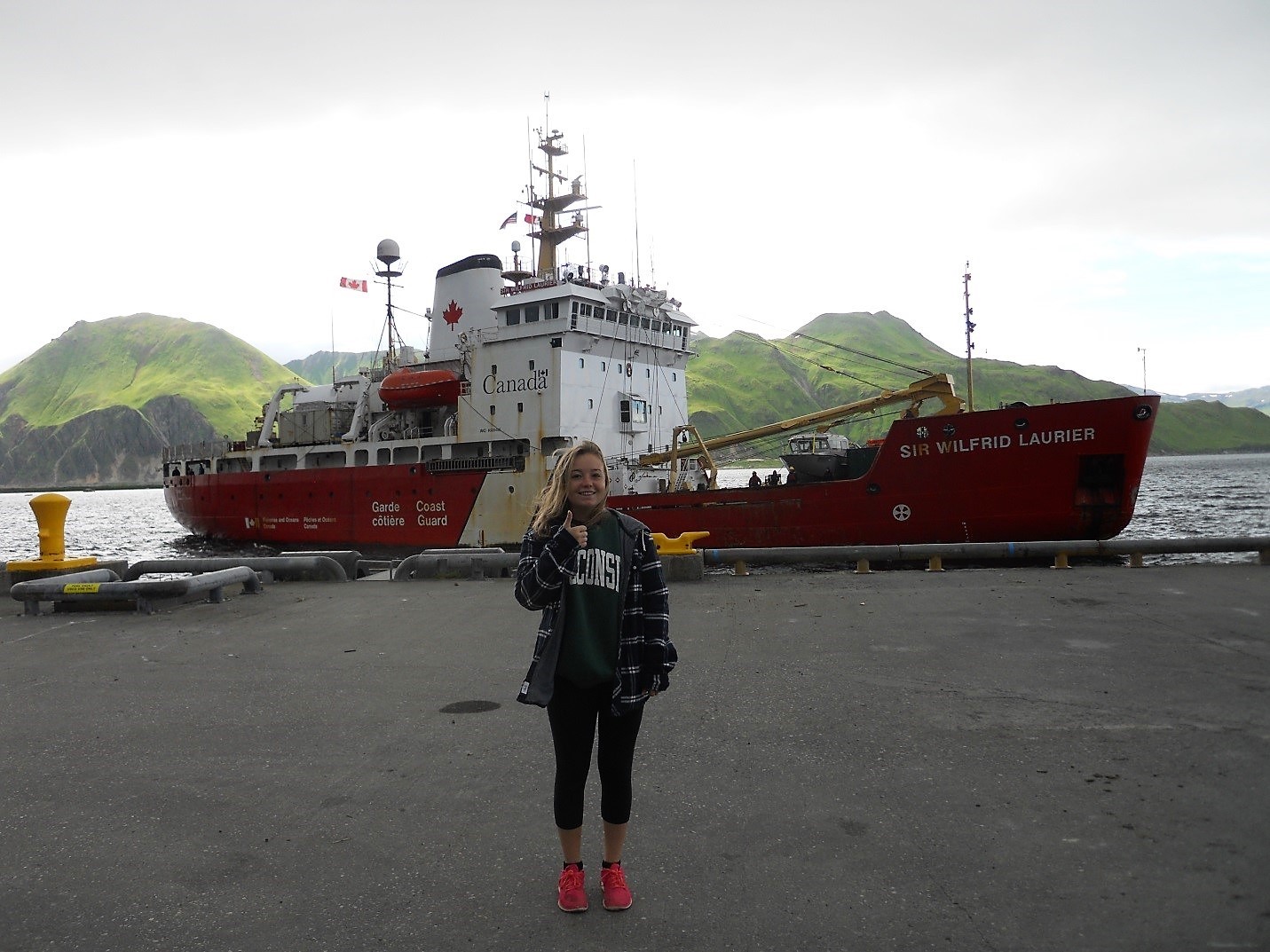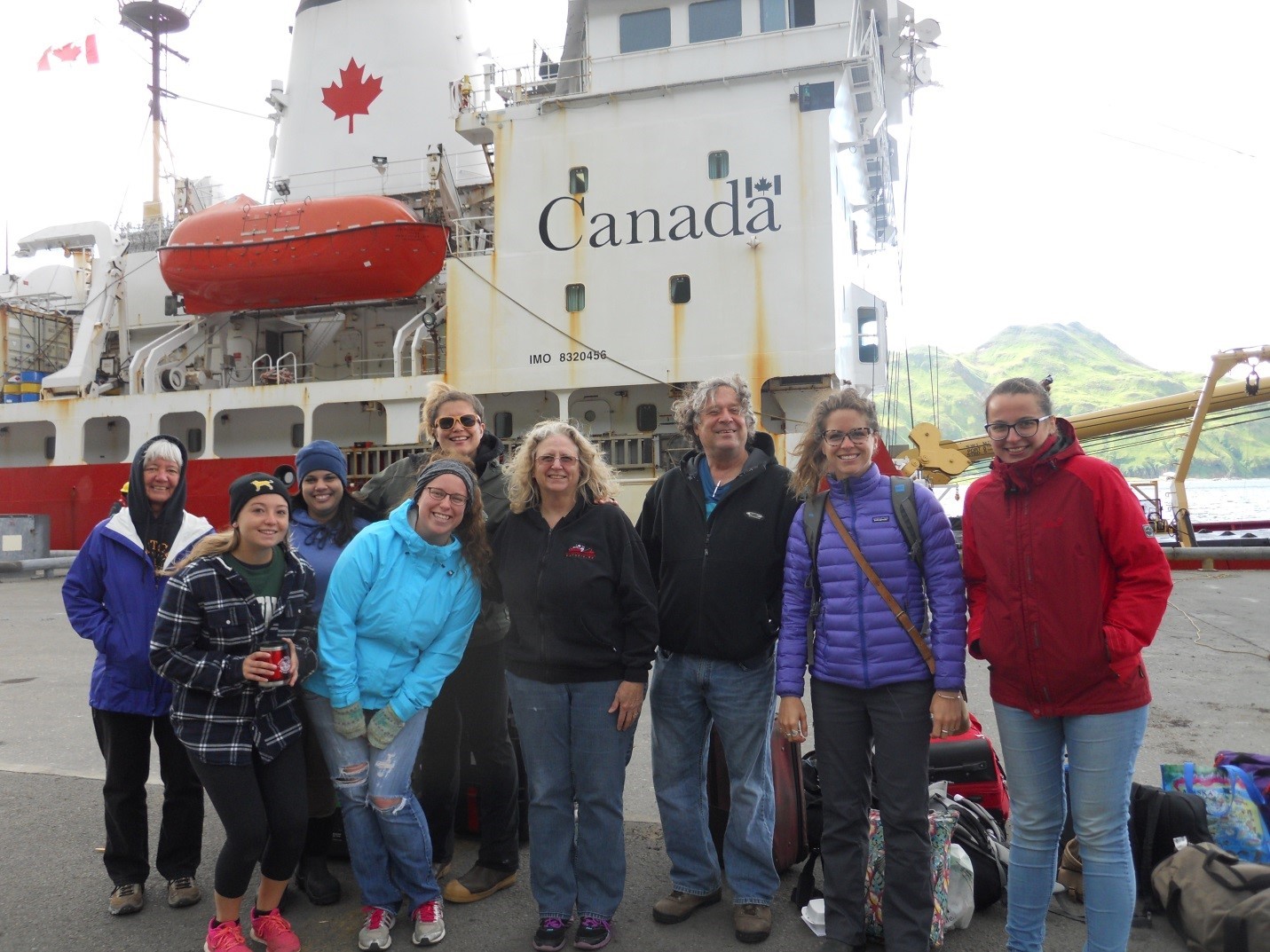Knauss legislative fellowships in Congress help build careers — and they're fun and educational. See our video and fact sheet for details.
Exploring Climate Change in the Arctic Aboard an Icebreaker
I am spending this summer in a Maryland Sea Grant program called Research Experiences for Undergraduates, and through it I received an unusual opportunity: to spend two weeks aboard a research ship helping with research in the Arctic!
I am accompanying my mentor, Dr. Jacqueline Grebmeier, who is a principal investigator for the Distributed Biological Observatory (DBO), a National Science Foundation-funded program which annually makes physical and ecosystem measurements to track change in the Bering and Chuckchi Seas.
Our research vessel will be moving northward and stopping at 62 research stations in the Bering and Chuckchi Seas. We will then get off the ship near Point Barrow, the northernmost tip of Alaska. I am helping my mentor to collect water samples and benthic sediment (ocean-bottom mud) samples at most of these stations. We will collect water samples taken from different depths for measurement of nutrient concentrations and chlorophyll levels, as well as other water characteristics. We will send the sediments and the organisms collected from the sediments back to Chesapeake Biological Laboratory (CBL) where the various bivalves, amphipods, polychaete worms, and sea stars found in the mud will be identified and weighed.
Dr. Grebmeier, who is a researcher at CBL, has been collecting these water and benthic mud data at these same stations for the past 25 years. These time-series data show us how benthic species composition and biomass are changing in the Bering and Chukchi Seas—and this may give us insight into broader Arctic ecosystem responses to climate change. Throughout her career, my mentor has observed general declines in benthic biomass at many of these stations. Increasing air and water temperatures, reduced sea ice cover (which in turn reduces amounts of under-ice algae), and the northward movement of oceanic organisms from warmer sub-Arctic waters are all likely contributors to ecosystem changes in the Arctic. Although many of the mechanisms for this loss of benthic biomass are uncertain, we do know that reduced food to the underlying sediments and changing current patterns have an influence on benthic biomass.
 |
|
Rocking my cool outfit that I get to wear while collecting samples of benthic mud. Credit: Sophie Caradine-Taber |
Our vessel is a Canadian Coast Guard icebreaker named the Sir Wilfrid Laurier (named for the first French Canadian prime minister of Canada; he is also pictured on the five-dollar Canadian note). We boarded the Laurier in Dutch Harbor, Alaska, on July 9 and have been moving northward since. For the first few days, I helped set up the lab, unpacking lab equipment and securing it with a hefty amount of duct tape and bungie cords so that things didn’t move around too much on the ship. On my first full day at sea, I was pretty seasick and ended up sleeping for most of the day. I am now much more used to life on the boat and have gotten my "sea legs."
A few days later we stopped at our first round of research stations, and I got to learn how to collect the various samples using an instrument called the CTD (conductivity-temperature and depth) that makes those and some other measurements electronically and also includes a rosette of bottles for collecting water samples at specific depths. We use a Van Veen grab for mud samples.
It usually takes around two hours for the ship to travel from one station to the next, and it takes one to two hours to collect samples at each. So we don’t end up getting a solid night’s sleep but we do nap between stations. After a long night of sampling, all of the scientists on board get a bit tired (and delusional?), but interacting with so many other hard working people keeps our spirits high.
In addition to the Canadian Coast Guard crew, the ship’s passengers include many different kinds of researchers: our benthic research group, a pair of scientists studying zooplankton, a phytoplankton scientist, three physical oceanographers, a pair of scientists studying optical properties of light in the water, a marine mammal observer, and a seabird observer. I have been able to talk to all of these scientists about their research between our sampling stations, and it has been interesting to learn about the variety of different types of research that can be done side-by-side and simultaneously on one vessel.
Photo, top left: The Sir Wilfrid Laurier docked in Dutch Harbor, Alaska. Credit: Sophie Caradine-Taber
Check the Fellowship Experiences blog for more dispatches by Sophie about her research cruise.
Learn more about Maryland Sea Grant's Research Experiences for Undergraduates program, including how to apply.
See all posts to the Fellowship Experiences blog





